As we whiplashed down the switchbacks into Nazare, we saw the crescent beach. The Flixbus (30€ round-trip from Lisbon for both of us) made another sharp turn and we had a momentary peek of a tall cliff at one end. What a classic, and perfect Portuguese beach - our first trip here in Portugal with no agenda other than having fun. No immigration appointment, no figuring out if this is a good place to live.
When you're traveling without a car, the first thing to think about when you arrive is your luggage - hauling bags across town, and likely up a hill, is a workout and changes how you explore. Our Airbnb contact was fine with us leaving the bags there early, so that was the plan. It was only 1.5 km so we opted to walk.
Which meant we buzzed through the cute downtown. It'll be easy to come back, we figured. You know how when you are following directions you kind of guess where you're going to be going? We were pretty much heading dead ahead, or, as my grandfather called it, straight through the tobacco. We soon got a glimpse of what was straight ahead of us. Remember that cliff we'd seen? Yep, looks like our destination Airbnb was up on top. Perhaps zipping back into town might not be so easy.
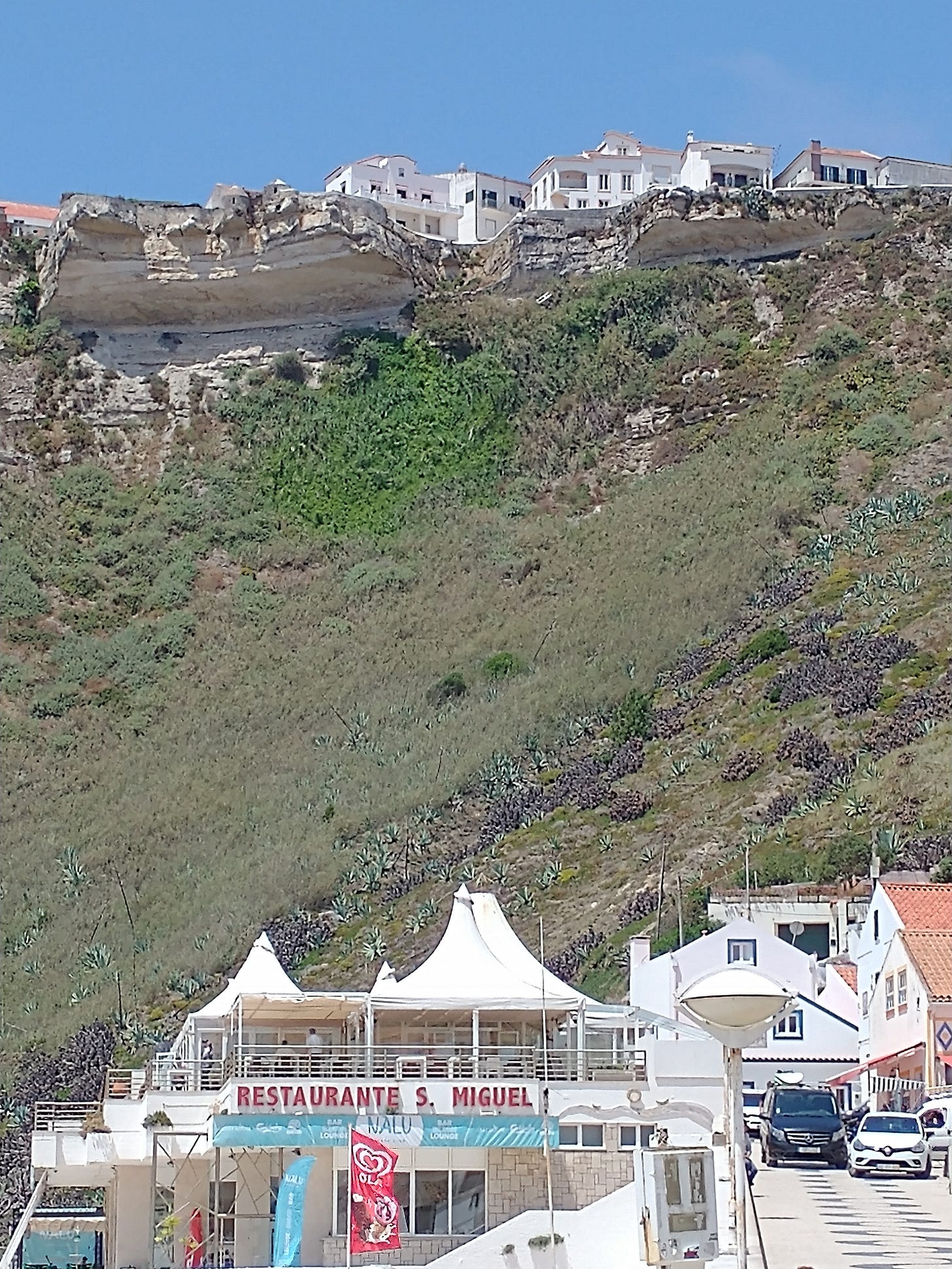
The walk climb was gorgeous. It just needed more benches. And porters to carry your luggage for you. For those of you who want to geek out with us, it’s a 272’ rise over .35 miles. If you want to geek out more, that’s a 14.7% slope.
Or maybe just the very old, very steep, and very long funicular to be working. Sadly, it was undergoing renovations.
As we climbed, our initial plans to get our luggage settled and then head back down to town started to evolve into finding a way to recover near our Airbnb and perhaps just hang out nearby for the day. Those stairs are long, and steep.
When we got to the top we could see that Nazaré is divided into three parts. There's the charming town by the beach that we walked through. There's a town in the hills we drove through before we got to the town by the beach. And then there's this charming community up on the top of the cliff. It's called Sítio.
The Sítio da Nazaré is of course most well known for the big waves for surfing. Although how anyone is supposed to surf, or even imagine, a 100 ft wave is beyond us. The big waves at Nazaré are from November to February and a little digging on Mr. Google got us a fairly good explanation that us lay people could follow.
After we dropped our bag off early at the airbnb, we were drawn immediately to the view. A moth/flame kind of thing. For those of you who have been to Ogunquit’s Marginal Way and or Newport’s Cliff Walk, this area along the cliff is very like those. It's a walk as close to the ocean as you can get with houses and buildings on your other side.
And yet, it's totally different; it has a very European feel. Rather than being a separate walk, it's worked into a large pedestrian network. And of course it's made of cobblestone. The wall that keeps you from falling off is a couple of feet high or too high to see over it - clearly it has been built or adapted over the years.
Once we were sated by our initial ogle, we took the sidewalks and walkways that emptied into a very large plaza dominated by an immense Church. It was very Wow! Where'd that come from!
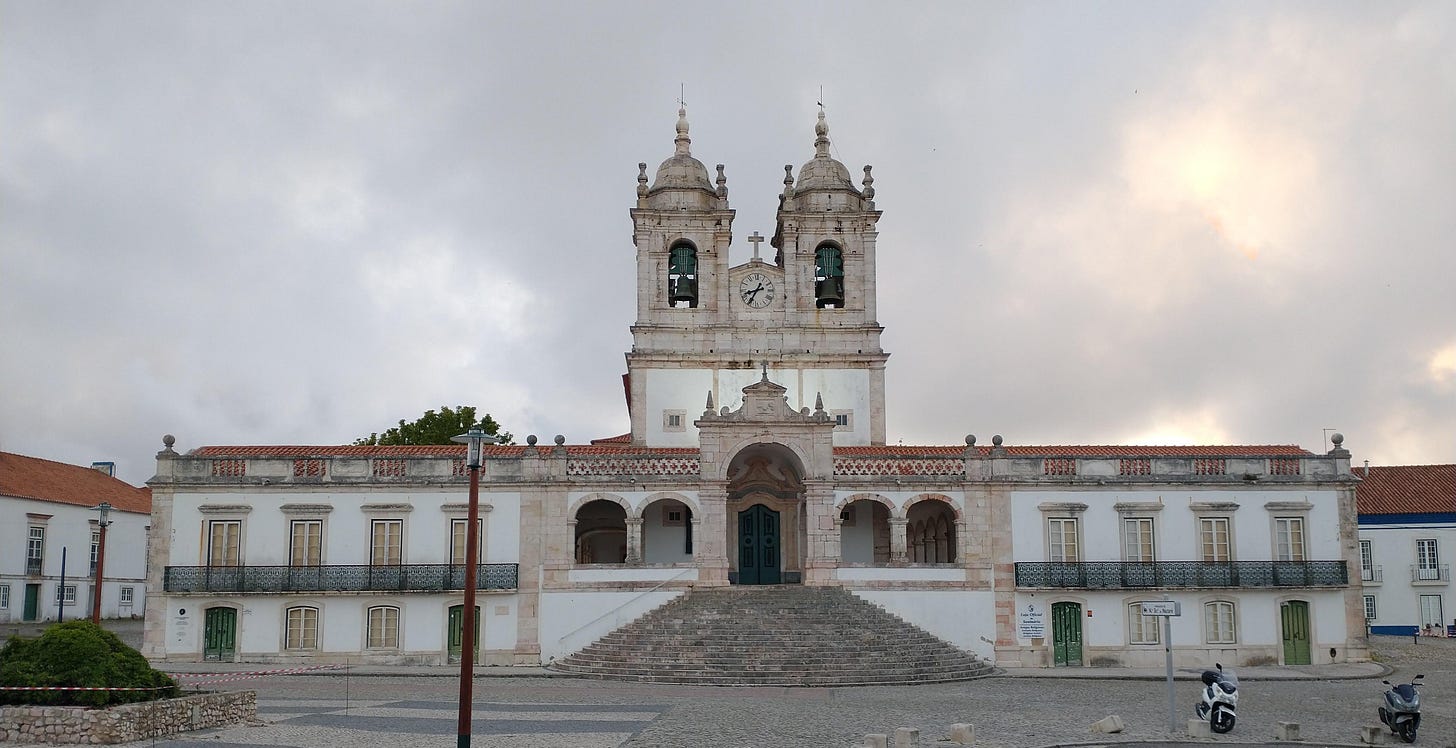
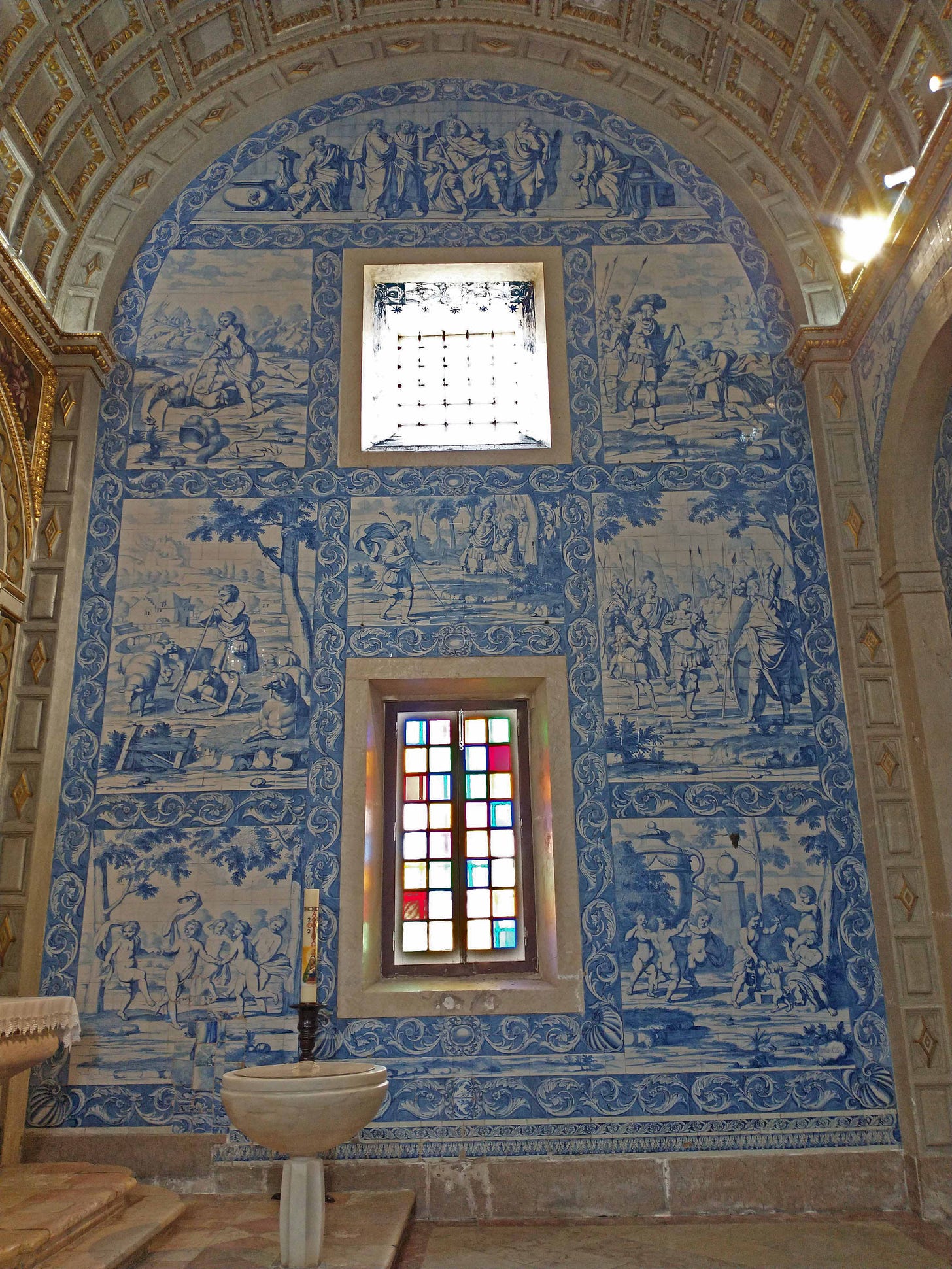
On the ocean side of the plaza, overlooking that gorgeous crescent beach, is the most charming …. tiny hut? With people…. coming out of it like a clown car? Where were they coming from? And could that building be any cuter? Investigation was called for. Turns out the hut is … amazing inside. And surprising. The hut is the top level and then you go down to one level to look at a statue. Later Ms. Google explained that the building is the Hermitage of Memory or the Chapel of Memory and was built in 1182. Let’s just say that again. 1182. Ok, ok, it’s been remodeled a bit. In the 1300s. It’s built over a cave. They closed access to the cave when people kept getting lost in the cave. Including a priest, holding a rope, and his dog. Rather than a blank wall, though, they put in a Black Virgin. This was, after all, during the time of Moorish rule. There’s also a panel representing the miracle that happened up here. Ok, ok, we can see we can’t stop there. In 1182 a dude, out hunting on his horse in heavy fog, nearly falls off the top of the cliff. He prays to the Mary, and miraculously the horse stops. Allegedly the marks of the horse’s hooves can be seen today in the stone.
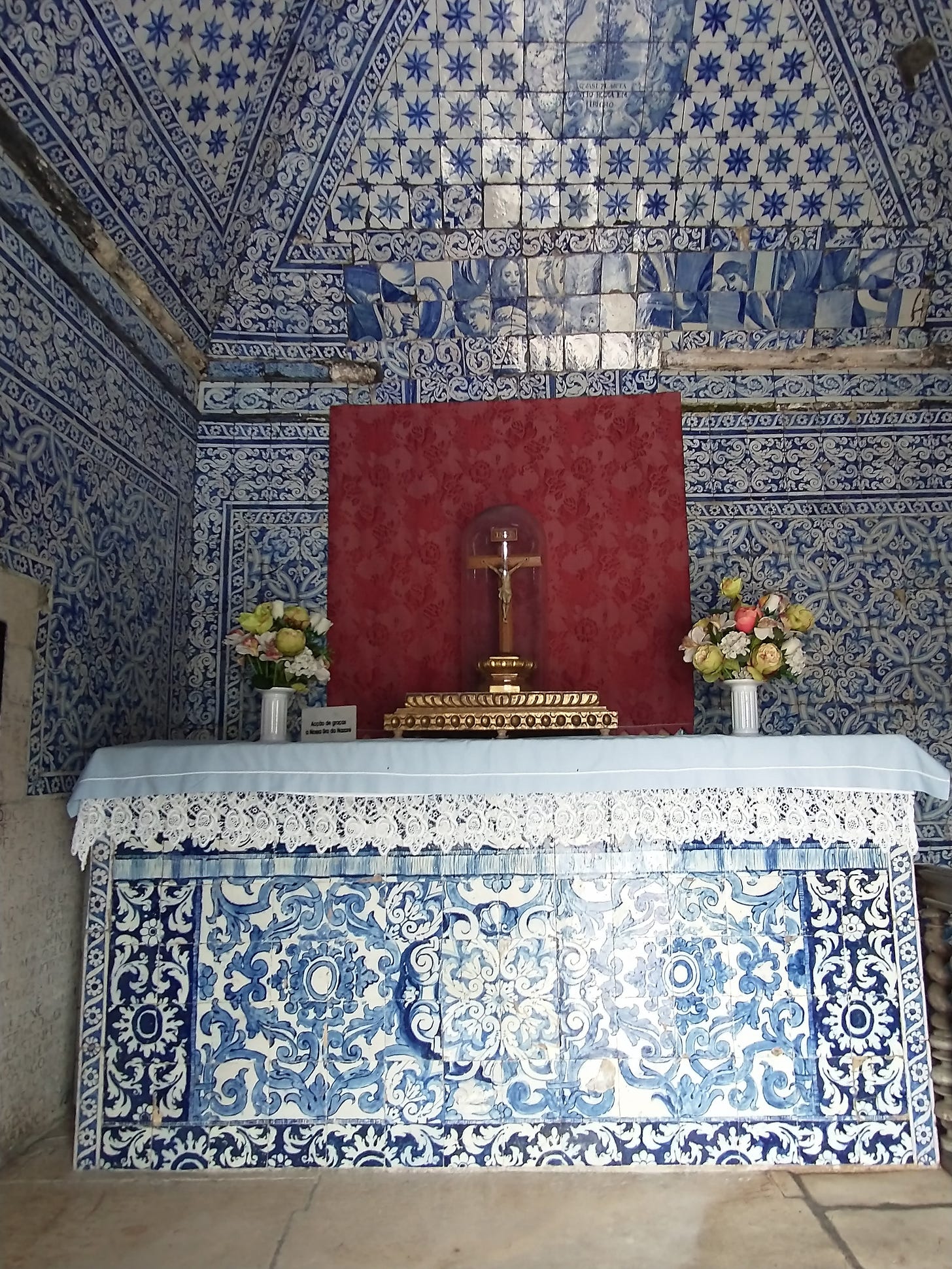
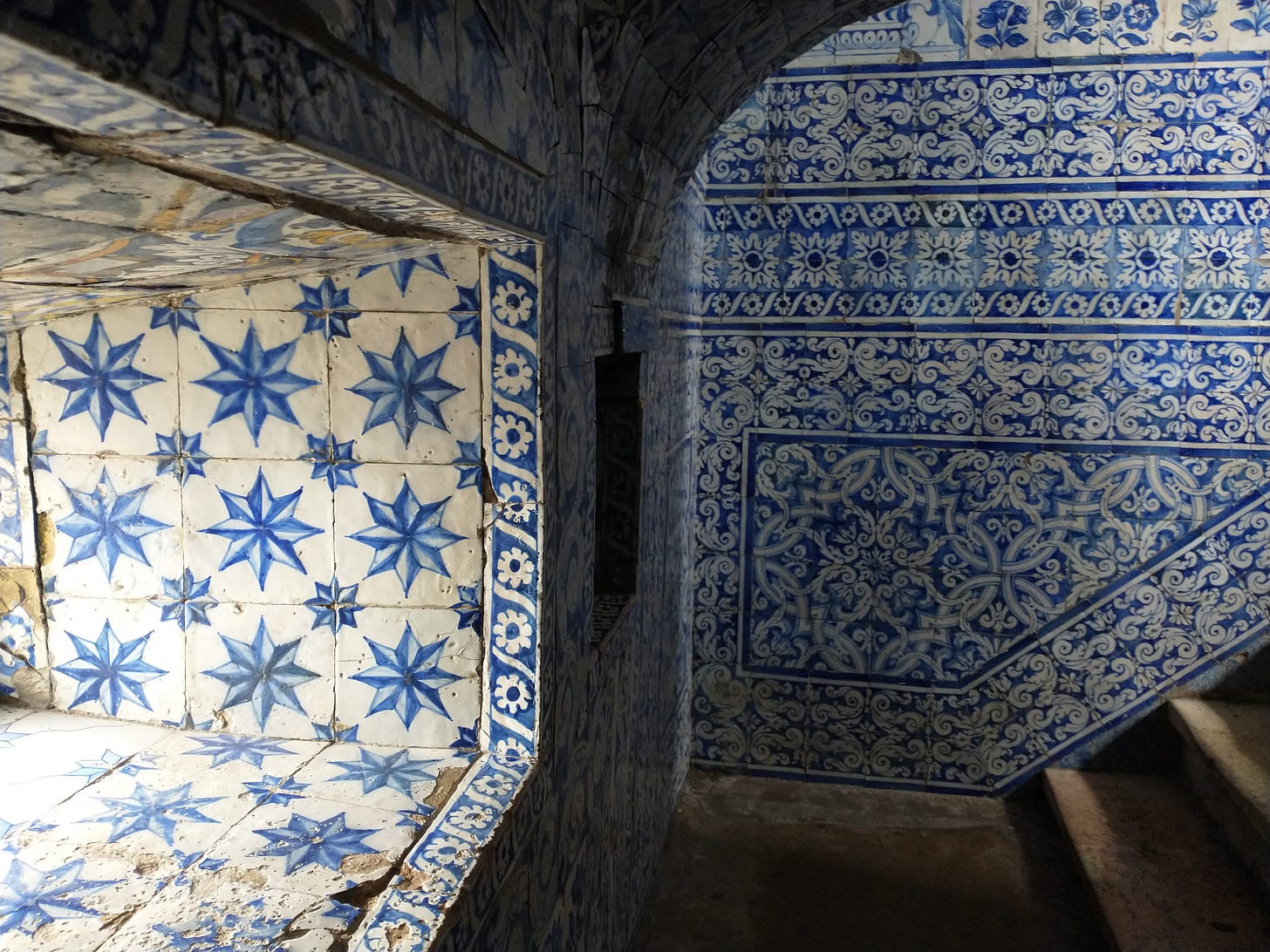

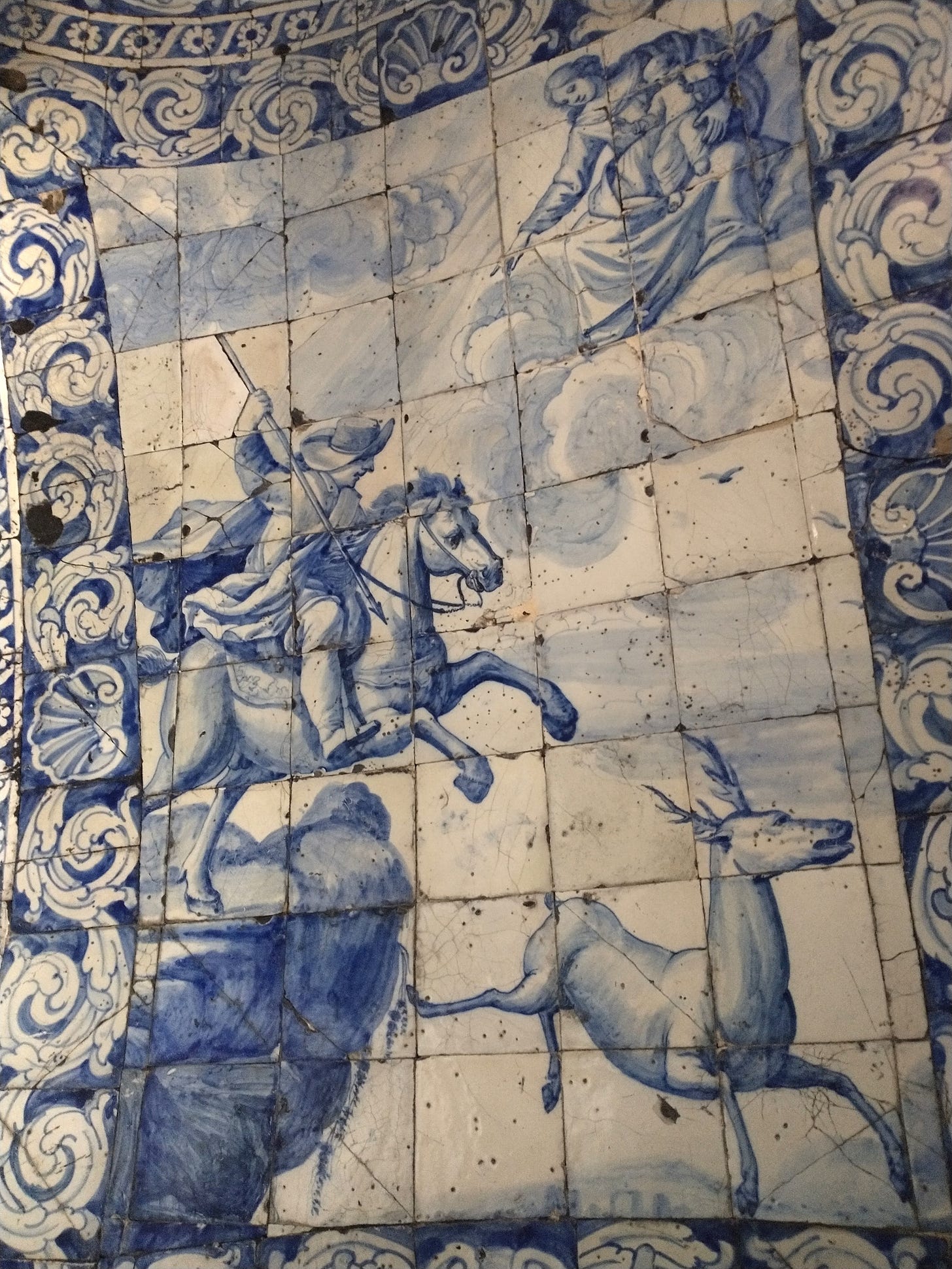
Wandering on down from the tippy-top you walk on out to the promontory and you pass a string of mediocre restaurant stalls (trust us) and rocks to climb, wildflowers to gawk at. At the tip is Forte de São Miguel Arcanjo (1577, which we never explored - next time!), and on the other side, another beach! What riches!
The next day we headed into town, straight for that gorgeous crescent beach. We’re here to tell you that yes! Down is easier! But when you go down that long, it’s still tough.
Pro tip: after a day in town, take an uber back up. 2.40€ and your legs are less like the jellyfish we saw on the beach. The town - right smack up on the beach remember - is much less touristy than we expected. It was more catering to those who live there. A ton of restaurants, yes, but also Mini Preço the large corner store chain, laundromats, loja Chinese. Some kitsch hard by the beach, but not as much as the plaza up on Sítio. Perhaps most of the tourists head straight to where there might be big waves?
After Amy had a lovely swim in the Caribbean/turquoise waters, we went to the Sun-Dried Fish Museum, which is comprised of a display inside a building, a bunch of boats, and some drying fish with locals nearby that you can talk to, if, you know, you can speak Portuguese. It’s easy to whip by this and not it’s much. But if you let yourself get into it, the history here is amazing. Nazaré had a strong culture of men fishing and women drying the fish. Out of the blue this concept of “bathing by the sea” became popular and took over the beach. We can’t imagine what that must have been like. Yay! More jobs. Boo, loss of what I know.
A few final impressions:
Overall, food was adequate. Many restaurants listed Arroz de Marisco as their specialty (the dish originates a half hour away by car) so we went for it at a moderate priced restaurant. We paid 38€ for a dish that serves two; a restaurant around the corner (in a much more desirable traffic pattern) offered the dish for 78€. It was great fun, but not something we will feel moved to repeat. Other than a vegan hotdog at one of those restaurant shacks, nothing was horrible enough to steer you away from. And nothing was good enough to urge you to try.
In case you think there’s nothing but beach to look at, and a stray church, the place is lousy with cobblestone design and stunning street art. Walking really is the only way to stumble on these incredible creations.
Nazaré did feel more traditional than Lisbon. Here’s how:
There were more loose dogs. We’re not saying they’re strays: we didn’t see any dogs who were thin or looked neglected.
Adding to this feeling were the women who were wearing much more traditional, homemade clothing. Many women, presumably widows, were all in black. It was an odd contrast to the not insignificant number of foreign residents.
At lunch we saw one guy who looked like he had rolled out of bed at noon shamble out of his open doorway (beads covered the entrance), walk a few doors down and enter a local market. A few minutes later he shuffled out with a head of lettuce, a tomato, and a sandwich, and went home.
That’s all for now.
Love from Lisbon,
Amy & Scott

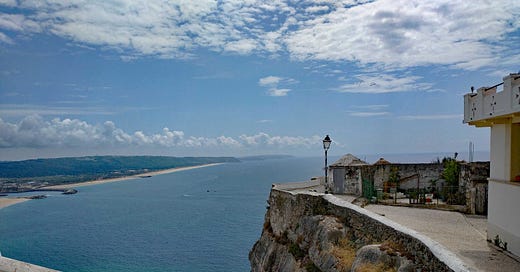


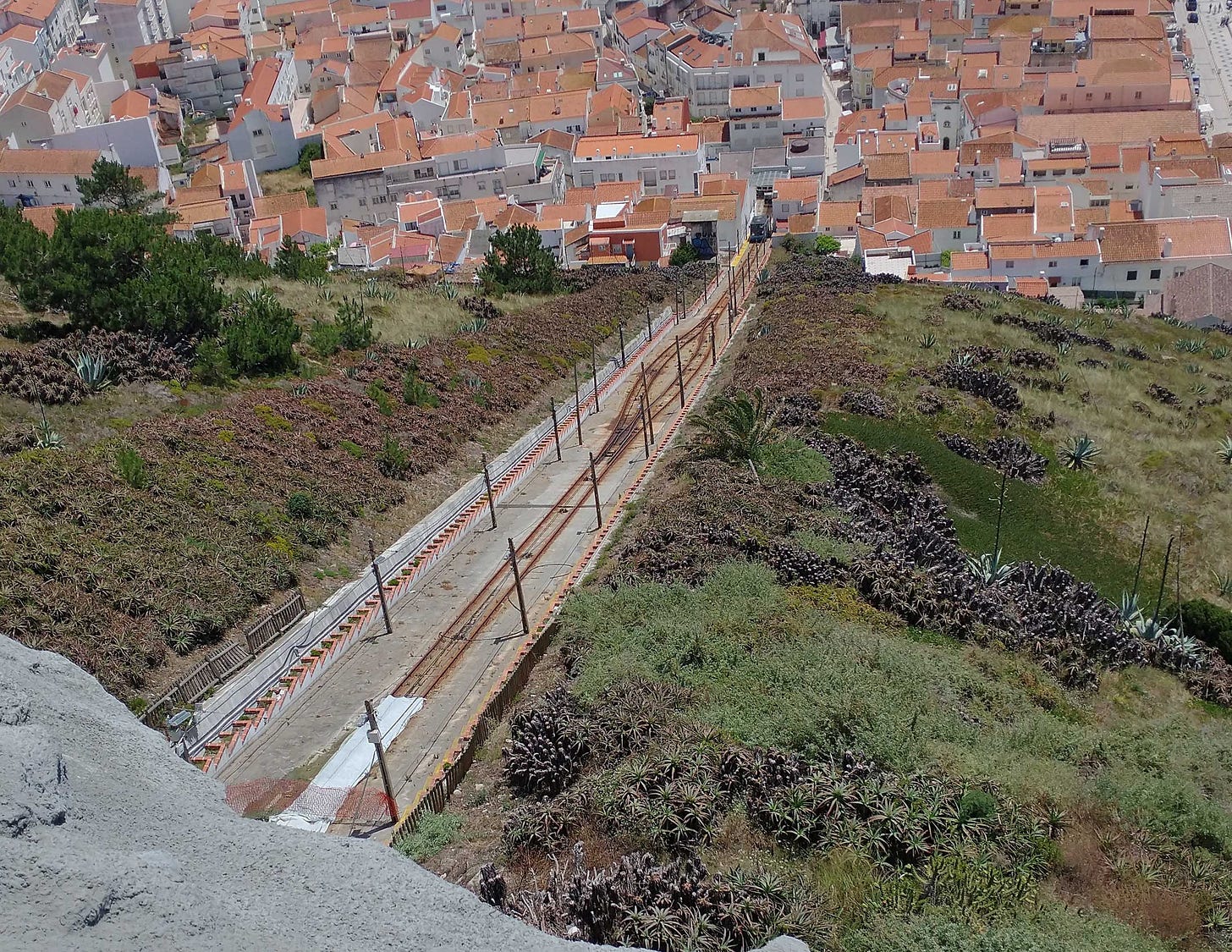
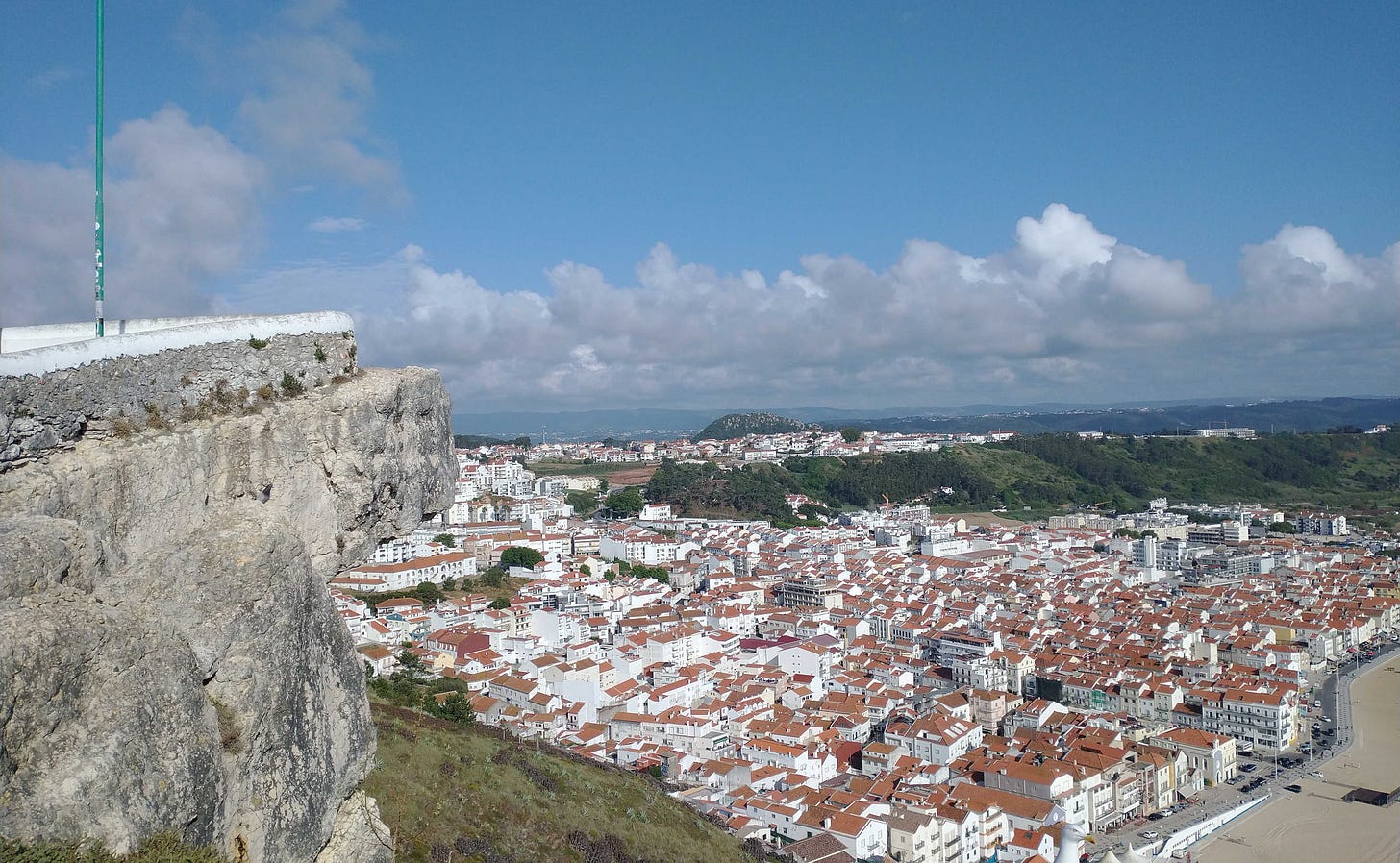

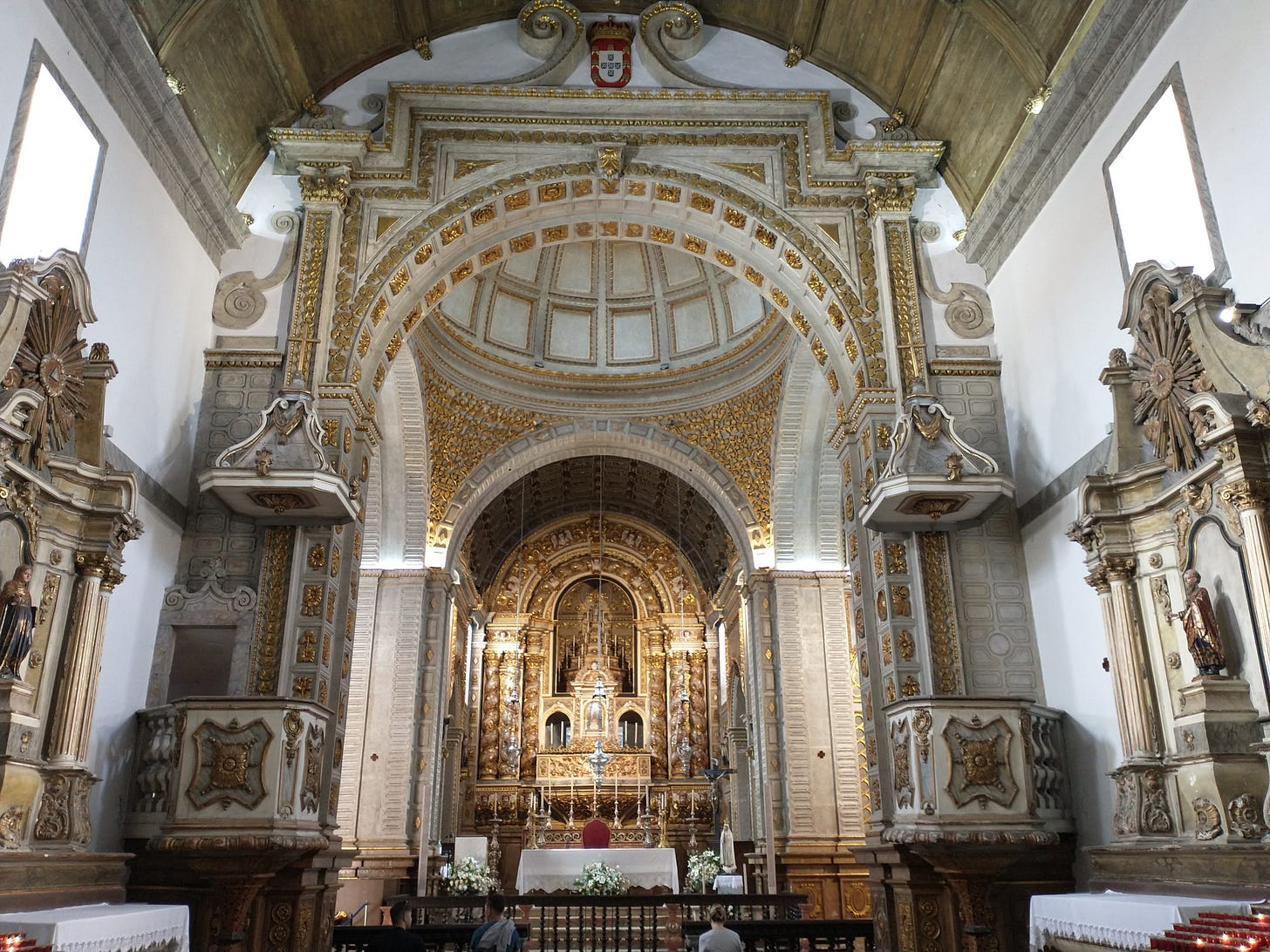

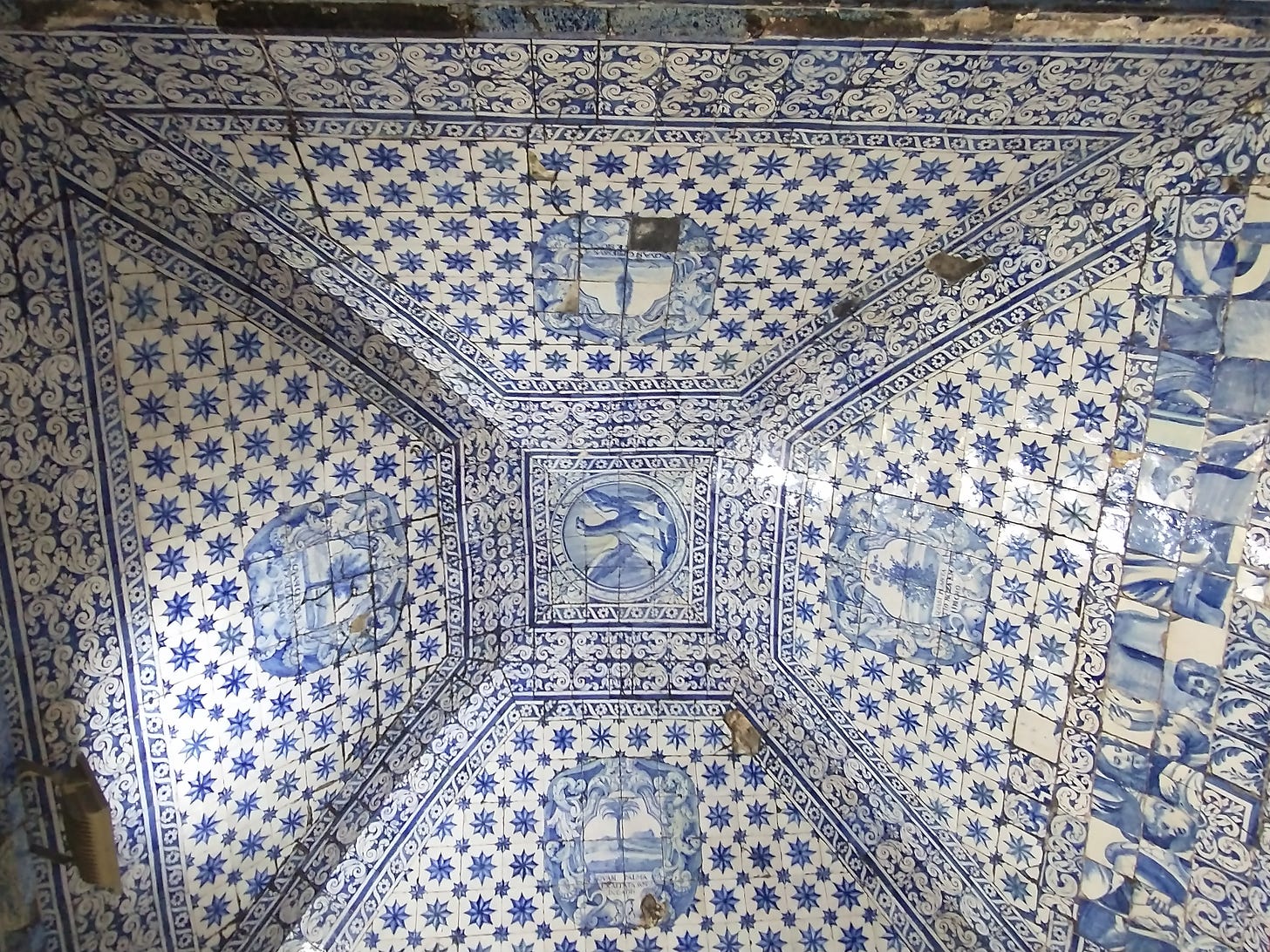
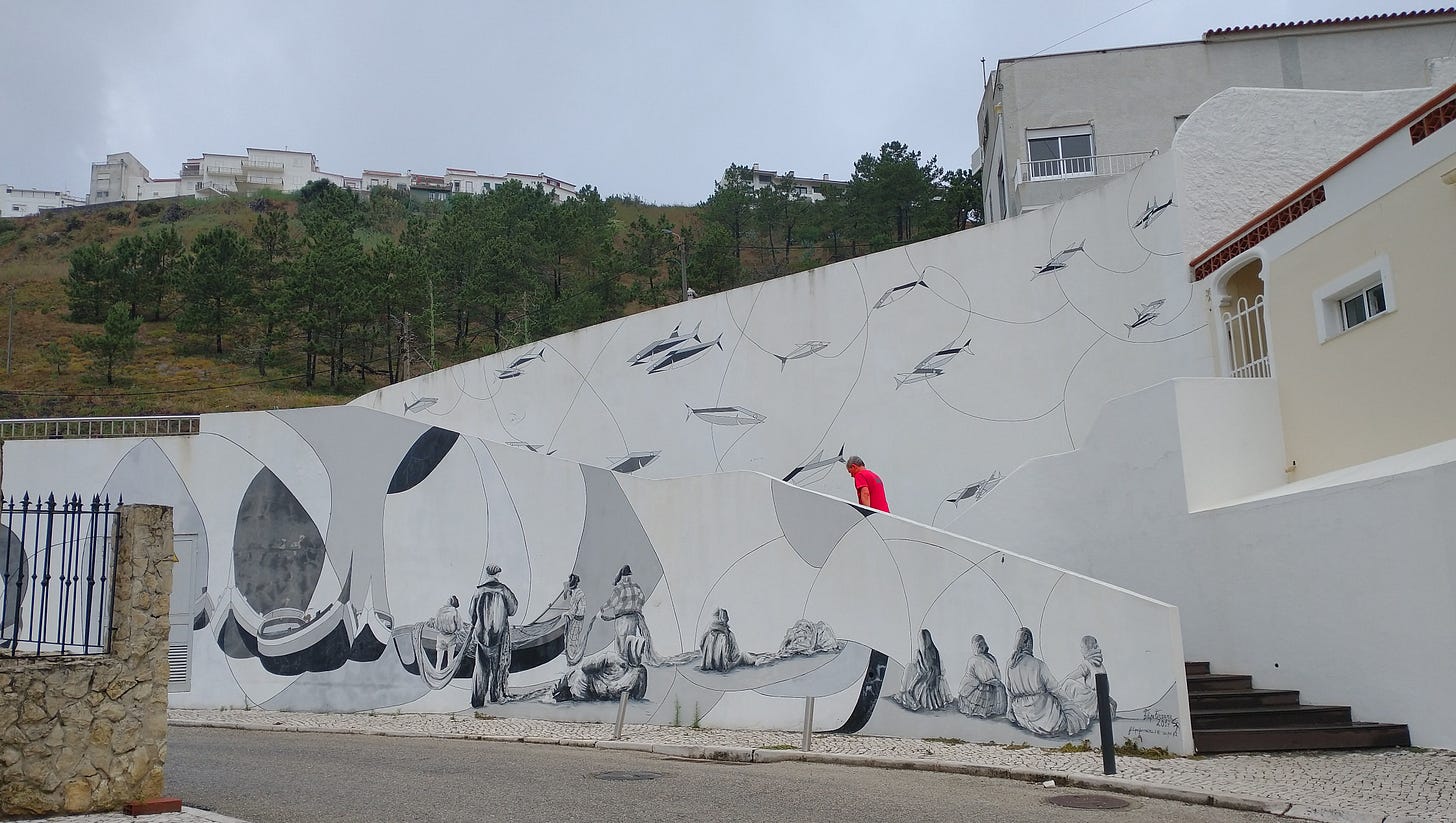

So, you guys stumbled upon the original escape room! If they had been thinking things through, they could have made tons of money making people figure out how to get out.
(I know...I am full of good ideas.) :)
I'm shocked at the food prices. Even 38 Euros for a shared plate seems incredibly high for a smaller town. I assumed when we got out of Lisbon, restaurant prices would be much lower. Maybe not such a safe assumption?
Very interesting and the great photos.
Glad you had a little vacation !